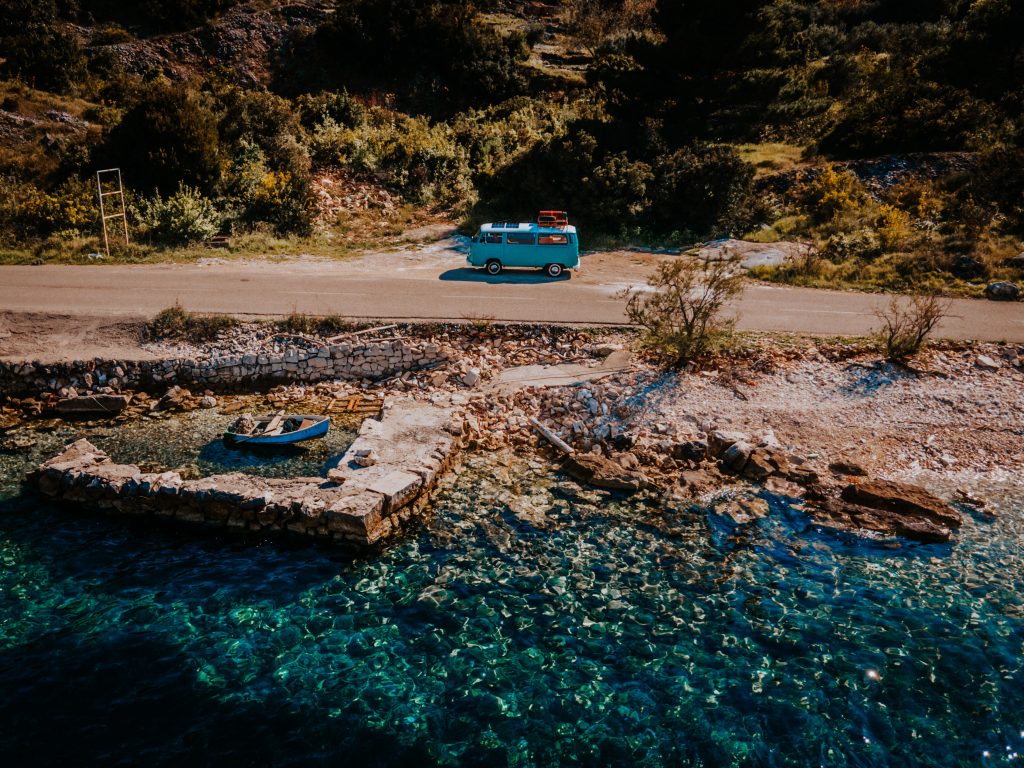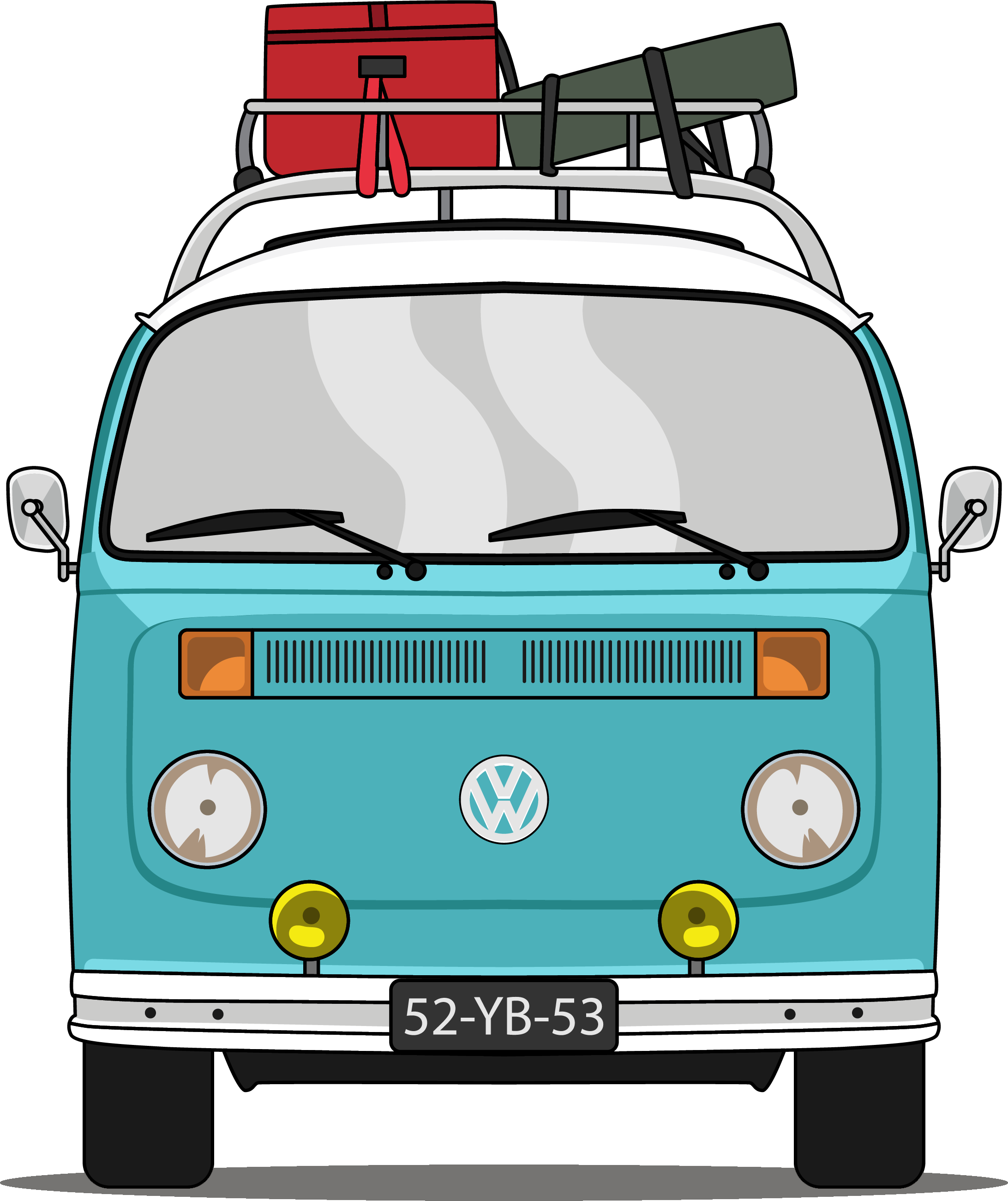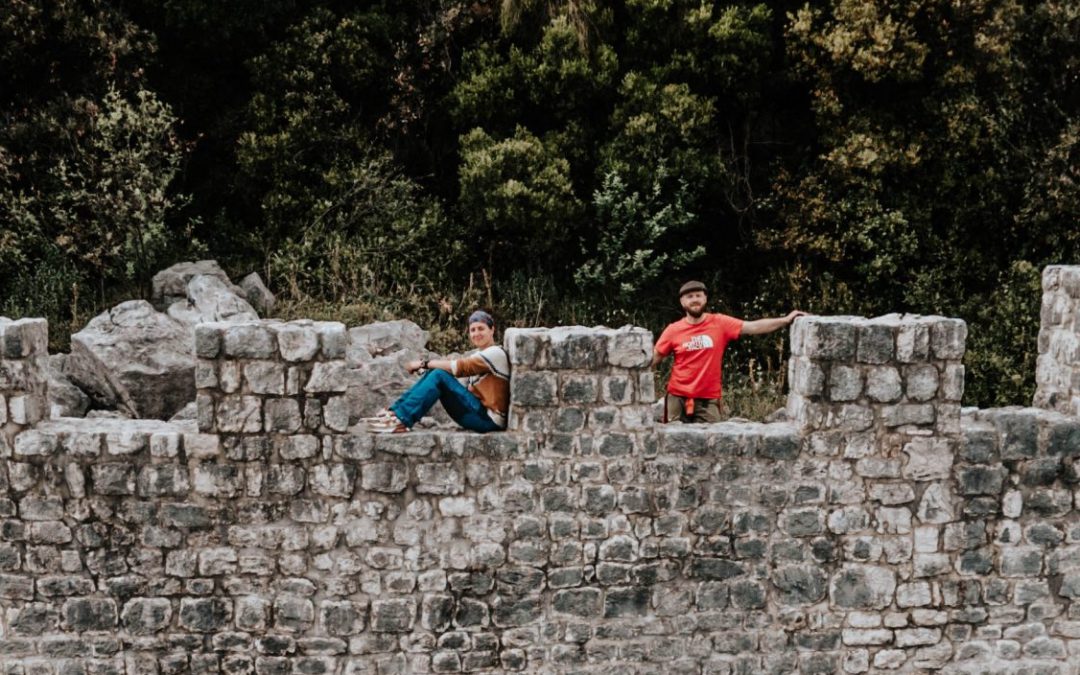After three days on the island of Korcula it is time to explore new parts of the world. This part being Bosnia and Herzegovina. Not really new but the city of Mostar is new for us both. That also means another border crossing and Bosnia and Herzegovina not being part of the European Union this might be a tricky crossing.
Don’t stop me now
After two ferries, three cups of coffee and finally time to read a book we arrive on the mainland of Croatia only 40 km’s away from our destination. We often skip the toll roads and chose the more scenic roads. It’s not only more beautiful but it’s also a lot more fun to drive these roads. We chose a town not far from Mostar to cross the border.
At the Croatian side the douane took his job way too serious. First he asked for our driver license and passport, secondly we had to drive to the side because he wanted to check the van. He did smile when we said we were going to China and told his colleague our crazy idea. But then he checked almost everything. Our dirty laundry he skipped, and he didn’t get to see our save. I’m sure if he did he wanted to know what is inside.
He wished us luck as we didn’t have a PCR test for Bosnia and Herzegovina.
PCR tests
For most countries you don’t need a PCR test when you are just transiting the country. That’s how we crossed borders without any problems. Besides that we can easily be in quarantine in our van and do not have any corona virus symptoms. Thus, they never ask us for a test. They only ask where we are from and where we are going.
But, there are borders with a lot of tension. The Croatian – Bosnian border is one of those. Not only due to refugees crossing the borders regularly, but also because of the past. It’s been only 25 years since the war ended. While the people won’t show you easily, the buildings do reveal the past with bullet holes uncovered.

Yugoslavia
Before I get into the border crossing let me explain to you a little bit about Yugoslavia. Yugoslavia was a country in Europe for most of the 20th century. It came into existence after World War I in 1918 under the name of the Kingdom of Serbs, Croats and Slovenes. The Kingdom gained international recognition on 13 July 1922 at the Conference of Ambassadors in Paris and on 3rd of October 1929 the state was officially named ‘Kingdom of Yugoslavia’.
The countries Bosnia and Herzegovina, Croatia, Kosovo, Mongenegro, North Macedonia, Serbia and Slovenia were part of Yugoslavia. In 1946 a communist government was established. After an economic and political crisis in the 1980s and the rise of nationalism, Yugoslavia broke up along it’s republic borders into five countries leading to the Yugoslav Wars.
The Yugoslav Wars were a series of separate but related ethnic conflicts, wars of independence and insurgencies. The war ended through peace accords, involving full international recognition of new states, but with a massive human cost and economic damage to the region. 140.000 deaths and 4 million people displaced.
It might have been Europe’s deadliest conflict since World War II and the wars were marked by many war crimes, including genocide, ethnic cleansing and rape. The Bosnian genocide was the first European crime to be formally classified as genocidal in character since World War II and many key individual participants in it were subsequently charged with war crimes.
A reason that Croatians sniff when they hear we are from The Hague.
Back to our border crossing
After a thorough search by Croatian police we left for the Bosnian border. An older man and very serious looking took our passports and asks where we are heading. “To China” Yuri replied. And then .. he asked for our PCR tests. “We have none because we are only on transit and want to check out Mostar”. “Cross at Dubrovnik” was his only reply. No discussion possible.
So, we turned the car around, drove from Bosnia and Herzegovina into no-ones land and into Croatia again. We tried at three more borders nearby but they were tiny borders only for local people. One of them was actually just a barrier for which one needed a code so it opened.
We decided you can’t have it all so drove towards the border on the way to Dubrovnik. Without question we entered Bosnia and Herzegovina. We were now about 50km’s away from Mostar but it felt like we’ve spend way too much time trying to get there and we have a lot of km’s ahead. So, in the end we skipped Mostar and went to Naum instead. Naum is a Bosnian city just because it’s located at the sea and the Bosnians wanted one location at the sea. There is nothing here and when you look across the water from Naum you see the Croatian peninsula with a huge Croatian flag. Buildings in Naum need maintenance and bullet holes are visible. It has a strange vibe and not one that is strange but beautiful but one that is just strange..
The stone wall of Ston
A little defeated we drive towards Dubrovnik but not before heading towards the stone wall of Ston. Apparently the longest stone wall of Europe. It’s original length is about 7km’s, now it’s 5km’s. We walk from Mali Ston to Ston over the wall, a hike of about 45 minutes with stunning views over both cities.
Ston is a medieval little town and the history dates back as far as the 14th century. It was a major fort of the Ragusan Republic whose defensive walls were regarded as a notable feat of medieval architecture.
The town is not only known for the Great Wall but also for it’s salt pans. It’s actually called ‘salt city’ by the locals. Even today the plants of the oldes active salt-works in the world are in operation (read at local info board). We didn’t have time to check the salt pans but we did see the wall, the castle and had a beer in the tiny cute town.
A well alternative for not reaching Mostar.
We drove to a place nearby, very remote but lovely, right next to some wine fields. Cooked ourselves some lovely diner and had a good night sleep.
Love Milene & Yuri




